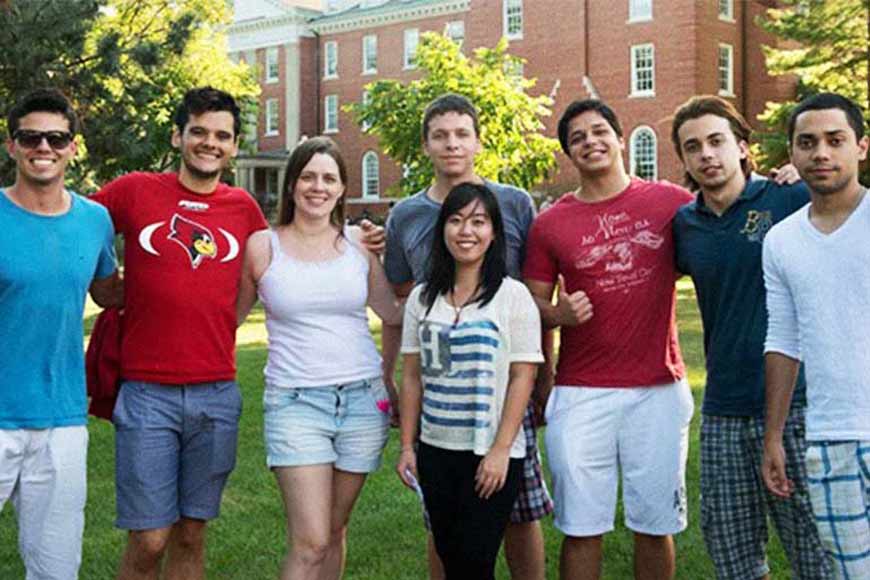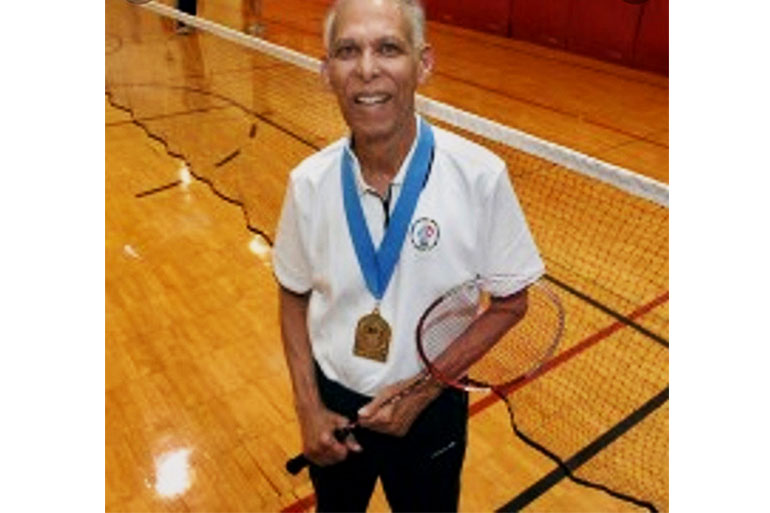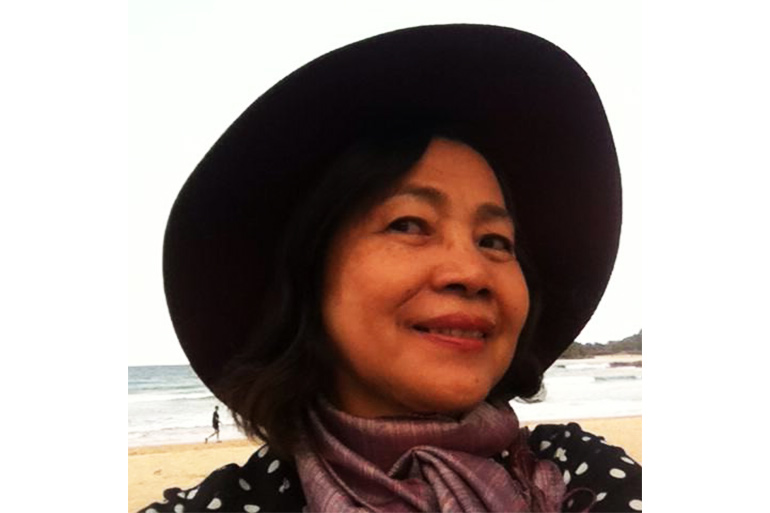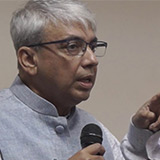La’au, Kaninit, Nadakkavukaran, and other names that America has taught me

International students of ISU
‘বিশ্বসাথে যোগে যেথায় বিহারো
সেইখানে যোগ তোমার সাথে আমারো।’
Rough translation: ‘That which connects you to the world as you go wandering/ Is also what connects me to you.’
Matthew Nadakkavukaran, Kaninit Pupatwibul, Yalakalavadi Govinda Rao, Thada Wararchakul, Jin Sun Han…
Who are these people?
Yes, I have met and been introduced to thousands of people from thousands of places during my 37 years in America. Indeed, this country has taught me the true meaning of the Bengali words ‘nana bhasha, nana mot, nana poridhan’ (different tongues, different ideas, different clothing). Not to mention the different names, about which I would otherwise have been clueless.
Our own country has historically been one of immense diversity too, of course - from Kashmir to Kanyakumari, Kamrup to Kandahar. But you must come to America, or perhaps Britain - to witness the dazzling racial mix of people from all over the world. Since I have never lived in Britain or Germany, I can only speak for the country where I have now spent more than half my life.
I remember almost every name – not just of those I grew to know closely, but also those whose names were so striking that they have remained etched in my memory. Actually, names have always fascinated me. They seem to transport me to a different world – one of fantasy and imagination.
I remember as a very young child, possibly while in Class VI of Scottish Church School, a friend and I would collect photographs of sporting icons. Our album – a humble exercise book bought from the grocer – obviously featured stars from Mohun Bagan, East Bengal and Mohammedan Sporting, such as Chuni Goswami, Balaram, PK, Samajpati, Arun Ghosh, Nayeem, John, Thangaraj, Balai Dey, Rambahadur et al. The cricket section had luminaries such as Sobers, Hall, Griffith, Bradman, Barrington, Cowdrey, Truman, Pataudi, Bedi, Prasanna, Chandrasekhar, who lit up our childhoods. Then there was hockey, and the likes of Dhyanchand, Gurbux Singh, and Ganesh.
An important addition were the famous Olympic athletes from America and Russia. Right from Soviet gymnast Larisa Latynina in early childhood to the Romanian Nadia Comaneci in college. I could remember really complicated names too, the Soviets chief among them. Names from wrestling and weightlifting. Easy to remember were the American names from swimming and athletics, such as Bob Beamon the long jumper. Then there were the famous athletes from East Germany, and legendary Cuban boxer Teofilo Stevenson. I can still recite those names at the drop of a hat.
While still a boy in shorts, I remember my friend Prithwis telling me the actual name of a footballer called Saleh. I don’t know whether he was right or merely pulling a prank, because in those days, it was the easiest thing in the world to evoke amazement in me, turning my eyes into saucers.
“You know what Saleh’s real name is?”
“No! What does a real name mean?”
He had rattled off, “Pitam Parambul Babakhan Abdul Razzan Khanjaan Saleh (Puthanparambil Babakhan Abdul Razzaq Saleh).” Pausing, he had smiled triumphantly at me, as though it was he who had named the man.
And then one day, Prithwis and many of my other friends left Scottish for Hindu School. I never met him again.
But I still remember the name he told me.
Today, I could have rendered Prithwis awestruck too - with names like Kaninit Pupatwibul, Yalagalavadi Govinda Rao, Guadalupe Fernandez Ramirez Davilla (pronounced Davia), Simin Safaripour from Iran, or Boutros-Boutros Ghali, a name I heard much later. I had all the ingredients to turn his eyes into saucers.
If only I could see him again.
 Dr Nadakavukkaran
Dr Nadakavukkaran
Dr Nadakavukkaran- everyone called him Dr N for short, which is the norm in America. Just as Professor Sunil Kumar Bhattacharya would become SKB, or yours truly became ‘PB Sir’ during his days in the Sundarban college. In America, they stick to the first letter only. Understandable for those who could mutilate a name like Bandyopadhyay so completely. Faced with ‘Nadakkavukaran’, they would probably turn three cartwheels and hiccup six times. Dr N was far better. And it saved time too – one of the most important aspects of life in America. Come to think of it, imagine the time saved by a student saying Dr N instead of Nadakkavukaran 25 times a day! No laughing matter.
We saved many more minutes. Not only did Dr N supervise my first job – remember the assistantship worth $380 per month - but also conducted our weekly group meetings, distributed work, checked and submitted answer scripts, and met us in the office. It was he who, noticing the state I was in, arranged for unpaid work for Mukti in his electron microscopy lab, simply so she had a solid reason to travel to America. Those days, I met him a million times a day. Like Dr Weber, he invited me home for dinner, introducing me to his American wife Ann and two daughters. A delightful family.
Dr N and Dr McCracken were the two professors of Botany, and I suspect the two conspirators behind the lucky break that was my American sojourn. Thank you for the conspiracy, both of you. You opened the doors of the world to me.
I also made friends with a bunch of Thai people. Like me, yearning for the wife I had left behind in India, Kaninit was always thinking of her husband and two young children back home. In no time, we were fast friends. Between classes, she would invite me to her place for afternoon coffee, and chat with me in even worse English than mine. Or she mostly smiled. A smile is the best, simplest, and most universal language. A global language. Much better than even Esperanto.
 Kaninit Pupatwibul
Kaninit Pupatwibul
However, she was under no compulsion to stay back in America for life, as I was. Remember Ranjan’s Professor Brockman? Well, Kaninit Pupatwibul got a research degree in molecular biology under him and went back to Thailand. In the interim, her husband and children came over for a visit. Back home, we heard she was living in either Lopburi or Chonburi, both beautiful places, working as a science dean. The Thai friend who told us this was called - wait for it - La’au Ampornpan.
In America, Kaninit became Nit. As for La’au, we Bengalis had devised a beautiful, simple alternative. You’re right, it was ‘Lau’ (green gourd in Bengali). This was a brainwave from Abu Haider, the only Bangladeshi representative at ISU. A regular insect he was, too.
Lau never objected, simple, good natured soul that she was. Having come to America to study at a fairly advanced age, she faced severe language problems, much like our friend Jin Sun Han, the girl from Korea.
On the other hand, my English was now progressing like an American racing car. Brenda, the six-foot tall, dangerously beautiful supermodel look alike from our department, would bend over me and ask, “Do you know how fast you’re doin’ it?”
Gazing at her long, golden hair, I would respond, “Really?”
(To be continued)
Translated from Bengali by: Yajnaseni Chakraborty
We are happy to present ‘Mericamaya Satkahan’, a weekly column by renowned human rights activist Dr Partha Bandyopadhyay, every Monday on GetBengal











